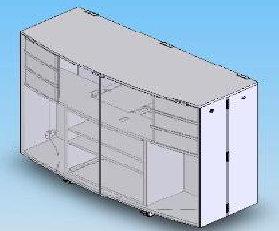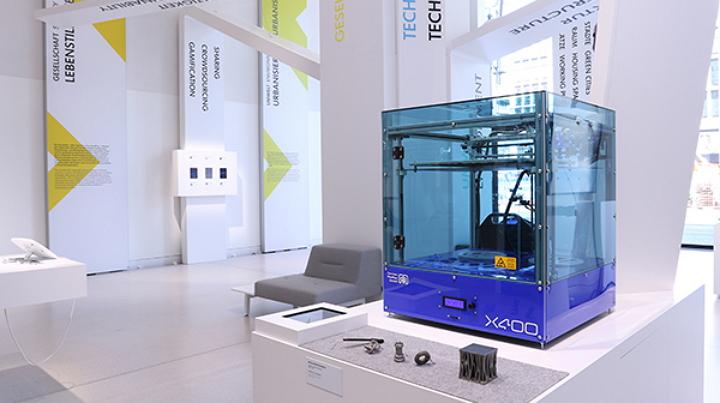The common door hinge may well have been around for more than 5000 years, and there’s existing evidence that they were made from everything from wood and stone to bronze and various other metals. Societies from the Akkadians to the Hittites built massive palaces and gates which featured enormous, load-bearing metal hinges.
Once the industrial revolution began to take hold, complex hinges and a raft of innovations became the order of the day, but they were expensive and labor intensive to produce.
Now The Popp Group, based in Forchheim, Germany, has used 3D printed door hinges to aid a customer intent on reducing the overall cost of medical cabinets.
“Our aim was to reduce production costs by producing an adjustable hinge for which many identical parts can be used,” says Holger Ried, a technical product designer for the Popp Group. “Compared to 3D printing, laser sintering or CNC cutting is very expensive. We had also tried printing in plaster, but stopped using this method on account of the relatively high maintenance costs of the printer.”
 With extensive experience in the manufacturing of furniture parts, the Popp Group began the process with a series of hand drawings they used to define the basic outlines of the pieces. Those drafts were then rendered in 3D using SolidWorks as a preliminary step in preparing them for printing in PLA.
With extensive experience in the manufacturing of furniture parts, the Popp Group began the process with a series of hand drawings they used to define the basic outlines of the pieces. Those drafts were then rendered in 3D using SolidWorks as a preliminary step in preparing them for printing in PLA.
Each of the resultant designs – several functional models of each were printed as prototypes – were handed over to the customer for testing and so that they could be evaluated for aesthetics as display models.
The hinges were printed using an X400 3D printer from German RepRap. As the X400 has a print volume of 390 x 400 x 330 mm – several prototypes were printed at the same time to cut down on lead time and cost.
“3D printing enables any modifications required to be implemented quickly, and new models can be presented to the customer in the shortest possible time. Previously, it took often a week before a prototype could be supplied, only to then discover that the design had to be changed again,” Ried said. “Depending on the model, the time required for prototype production today has fallen from one week to eight hours. The customers also appreciate the possibility of quickly being able to hold prototypes in their hands.”
Ried says he’s always been an advocate for 3D printing, and he says using the X400 was chosen as the preferred solution due to the price versus performance ratio the machine represents. He added that the X400 in his shop has now been running continuously for approximately six months.
 Have you ever re-designed a common product using 3D printing? Ever use an X400 3D printer from German RepRap? Let us know in the Cutting Costs With 3D Printed Hinges forum thread on 3DPB.com.
Have you ever re-designed a common product using 3D printing? Ever use an X400 3D printer from German RepRap? Let us know in the Cutting Costs With 3D Printed Hinges forum thread on 3DPB.com.
Subscribe to Our Email Newsletter
Stay up-to-date on all the latest news from the 3D printing industry and receive information and offers from third party vendors.
You May Also Like
Profiling a Construction 3D Printing Pioneer: US Army Corps of Engineers’ Megan Kreiger
The world of construction 3D printing is still so new that the true experts can probably be counted on two hands. Among them is Megan Kreiger, Portfolio Manager of Additive...
US Army Corps of Engineers Taps Lincoln Electric & Eaton for Largest 3D Printed US Civil Works Part
The Soo Locks sit on the US-Canadian border, enabling maritime travel between Lake Superior and Lake Huron, from which ships can reach the rest of the Great Lakes. Crafts carrying...
Construction 3D Printing CEO Reflects on Being Female in Construction
Natalie Wadley, CEO of ChangeMaker3D, could hear the words of her daughter sitting next to her resounding in her head. “Mum, MUM, you’ve won!” Wadley had just won the prestigious...
1Print to Commercialize 3D Printed Coastal Resilience Solutions
1Print, a company that specializes in deploying additive construction (AC) for infrastructure projects, has entered an agreement with the University of Miami (UM) to accelerate commercialization of the SEAHIVE shoreline...






























